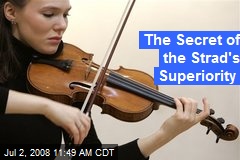Nicola Benedetti has been whisked in to replace Janine Jansen, who is unwell. It’s her proper debut with the orch, the previous appearance having been a bit part in September 2011 in Andrea Bocelli Live in Central Park, performing Lorin Maazel’s arrangement of Rodrigo’s “En Aranjuez con tu Amor” (Nicky, how could you?). This time she’s playing Szymanowski (phew!).
Also on debut with the Phil is the London Philharmonic’s Vladimir Jurowski. (What took them so long?)
Press release below.

Violinist Nicola Benedetti will make her New York Philharmonic subscription debut —
replacing Janine Jansen, who has been advised by her doctor not to play for at least a week — in
performances of Szymanowski’s Violin Concerto No. 1. Vladimir Jurowski will make his
Philharmonic debut conducting the concerts, Wednesday, May 21, 2014, at 7:30 p.m.; Thursday,
May 22 at 7:30 p.m.; Friday, May 23 at 2:00 p.m.; and Saturday, May 24 at 8:00 p.m. The
program will conclude with selections from Prokofiev’s Cinderella.
Nicola Benedetti made her New York Philharmonic debut in September 2011 in Andrea Bocelli
Live in Central Park, performing Lorin Maazel’s arrangement of Rodrigo’s “En Aranjuez con tu
Amor” alongside Mr. Bocelli, conducted by Music Director Alan Gilbert. Szymanowski’s Violin
Concerto No. 1 is the work with which Ms. Benedetti won the BBC Young Musician of the Year
competition in 2004; it also featured on her debut recording, recorded with the London
Symphony Orchestra led by Daniel Harding on the Deutsche Grammophon label.
In a first wobble since the Philadelphia Orchestra went into Chapter 11 bankruptcy, principal clarinet Ricardo Morales is moving to Manhattan at the end of next season, writes philly.com
Although he’ll be around til summer of 2012, the announcement is a blow for Philly morale. Soloists of Ricardo’s calibre are hard to come by.
His wife, Amy Oshiro, plays violin in the orchestra.
Here’s his c.v.

RICARDO MORALES joined the Philadelphia Orchestra as principal clarinet in 2003. Prior to this he was principal clarinet of the Metropolitan Opera Orchestra, a position he assumed at the age of 21. He has also served as principal clarinet of the Florida Symphony. A native of San Juan, Puerto Rico, Morales began his studies at the Escuela Libre de Musica along with his five siblings, who are all distinguished musicians. He continued his studies at the Cincinnati Conservatory of Music and Indiana University, where he received his artist diploma.
Morales has been a featured soloist with many orchestras, including the Metropolitan Opera Orchestra and the Chicago, Cincinnati, Indianapolis, Flemish Radio, North Carolina, Puerto Rico, Florida, and Columbus symphonies; he has also appeared on the Metropolitan Museum of Art Concert Series. He made his solo debut with the Philadelphia Orchestra in 2004.
An active chamber musician, Morales has performed in the MET Chamber Ensemble series at Carnegie’s Weill Recital Hall, at the Santa Fe Chamber Music Festival, the Saratoga Chamber Music Festival, and the Kennedy Center, on NBC’s The Today Show, and with the Chamber Music Society of Lincoln Center. He is highly sought after for his recitals and master classes, which have taken him throughout North America and Europe. In addition he currently serves on the faculties of the Juilliard School and Temple University.
Morales’ debut solo recording, French Portraits, is available on Boston Records. He has joined forces with acoustician and instrument maker Morrie Backun to create MoBa, a company of top-of-the-line clarinet accessories, including mouthpieces, bells, and barrels.
04/07
The composer Jack Gottlieb, who was Leonard Bernstein’s assistant at the New York Philharmonic and later publications director of the Bernstein Office, has died aged 79. He was halfway through a year of his appointment as Leonard Bernstein Scholar in Residence at the New York Philharmonic.
Deatails of his life at his
website.
photo: Brandeis
The composer Jack Gottlieb, who was Leonard Bernstein’s assistant at the New York Philharmonic and later publications director of the Bernstein Office, has died aged 79. He was halfway through a year of his appointment as Leonard Bernstein Scholar in Residence at the New York Philharmonic.
Deatails of his life at his
website.
photo: Brandeis
The New York Philharmonic has put some of its archives online, including the score that Leonard Bernstein marked up for Mahler’s ninth symphony.
How exciting is that?
Read this passage from Why Mahler? and you can see where a large part of my weekend is going…

Why Mahler, page 239 (UK), 211 (US)
Whose Mahler?
A Question of Interpretation
i. Lenny’s Scotch
One Sunday afternoon in 1985 at London’s
Barbican Hall, after Leonard Bernstein had signed his name on record covers for
an hour with a tea-glass full of whisky at his elbow, twice replenished, he
dismissed his minders to sit with me and two friends over the score of Mahler’s
Ninth that he had just performed. One of my friends was preparing to conduct
the symphony for the first time.
We stood around his table, a cigarette
curling in an ashtray. Lenny opened the score at the entry-point of harp, horn
and cellos. From this tremulous passage, and on almost every page thereafter,
the music was peppered with the conductor’s coloured pencil marks. He was not,
on the whole, one of those maestros who plot performances like military
campaigns. Other Mahler scores he had shown us were clean of marks, yet here he
could not leave the music alone. On the final page he wrote, ‘have the courage
to remain in 8!’ as if a conductor, drained, might lose traction at the
fadeout. ‘Why so many marks?’ we asked. Lenny drew deep on another
cigarette. ‘Mahler,’ he exhaled
expansively, ‘was a great conductor who premiered most of his own works and
showed us how he wanted them to sound. This one he didn’t live to conduct. This
one he wrote for me.’….
Michael Tilson Thomas gets a rare draught of oxygen in the New York Times today, in a blog by its chief critic, Anthony Tommasini, which celebrates his ‘bi-coastality’.
MTT has two orchestras, one in San Francisco, the other in Miami. Nothing new there, but the Times has not thought to feature it before.
Despite many virtues and a strong international career, MTT was mysteriously not supported either by the Times or by many players to head the New York Philharmonic during its various regime changes. The Times, led by Tommasini, has led vociferous recent campaigns against Lorin Maazel and, more dubiously, on behalf of Alan Gilbert.
So what’s wrong with MTT? Nothing, says Tommo. We love him.
He’s just not for New York
See also: Philharmonic proposes civil partnership to NY Times: http://bit.ly/ePV7hO
Michael Tilson Thomas gets a rare draught of oxygen in the New York Times today, in a blog by its chief critic, Anthony Tommasini, which celebrates his ‘bi-coastality’.
MTT has two orchestras, one in San Francisco, the other in Miami. Nothing new there, but the Times has not thought to feature it before.
Despite many virtues and a strong international career, MTT was mysteriously not supported either by the Times or by many players to head the New York Philharmonic during its various regime changes. The Times, led by Tommasini, has led vociferous recent campaigns against Lorin Maazel and, more dubiously, on behalf of Alan Gilbert.
So what’s wrong with MTT? Nothing, says Tommo. We love him.
He’s just not for New York
See also: Philharmonic proposes civil partnership to NY Times: http://bit.ly/ePV7hO
In the February issue of The Strad, I discuss the declining status of the orchestral concertmaster – once as important a figure as the maestro but now increasingly invisible. Why is that?

Here’s a sampler:
There was a time when, woken in the middle of the night, I
could rattle off the names of concertmasters in great orchestras the way a
schoolboy recites his football team or a whisky priest his catechism.
At Karajan’s left knee in Berlin sat Michel Schwalbé, the
expressionless Holocaust survivor. In Vienna, it was Rainer Küchl, young before
his time. Hermann Krebbers personified the Concertgebouw. Michael Davis led the
flash-Andre mob of the LSO. Rodney Friend kept the New York Phil in tune for
Boulez and Mehta. Samuel Magad ruled the line in Solti’s Chicago.
And it was not just world leaders who gripped the
imagination. Malcolm Stewart two-timed in Liverpool and Toulouse. Haim Taub was
a national institution in Israel. Steven Staryk held sway in Toronto. Christopher
Warren-Green at the Philharmonia was always poised for a maestro to stumble so
he could take over. The concertmaster, 30 years ago, was almost as much the
public face of an orchestra as its chief conductor and generally more
responsible than him for maintaining morale and tone….
And who’s this on the cover?

In the February issue of The Strad, I discuss the declining status of the orchestral concertmaster – once as important a figure as the maestro but now increasingly invisible. Why is that?

Here’s a sampler:
There was a time when, woken in the middle of the night, I
could rattle off the names of concertmasters in great orchestras the way a
schoolboy recites his football team or a whisky priest his catechism.
At Karajan’s left knee in Berlin sat Michel Schwalbé, the
expressionless Holocaust survivor. In Vienna, it was Rainer Küchl, young before
his time. Hermann Krebbers personified the Concertgebouw. Michael Davis led the
flash-Andre mob of the LSO. Rodney Friend kept the New York Phil in tune for
Boulez and Mehta. Samuel Magad ruled the line in Solti’s Chicago.
And it was not just world leaders who gripped the
imagination. Malcolm Stewart two-timed in Liverpool and Toulouse. Haim Taub was
a national institution in Israel. Steven Staryk held sway in Toronto. Christopher
Warren-Green at the Philharmonia was always poised for a maestro to stumble so
he could take over. The concertmaster, 30 years ago, was almost as much the
public face of an orchestra as its chief conductor and generally more
responsible than him for maintaining morale and tone….
And who’s this on the cover?

In a weekend piece today in the Wall Street Journal, I show how Gustav Mahler created the subscription series, thematic programming and orchestral touring – all fixtures of musical life in the United States to the present day. Ahead of his time? Very much a man of ours, I would say.
There were two final paragraphs that I was planning to append to the piece on how the cities Mahler visited are marking his centennial year. I had to drop the coda for reasons of space. You can read the article
here.
And these are the two extras pars:
Visiting several of the cities that Mahler toured, I found a
mixed legacy of hope and decay. In Syracuse, the orchestra cancelled a concert
of Mahler’s fifth symphony for want of funds, but a music lover, Hamilton
Armstrong, erected a memorial on the site where Mahler conducted and a radio
producer, Marie Lamb, passes by every day to sweep off the snow. In Buffalo, conductor
Jo-Ann Falleta launched the Mahler centennial with a Resurrection concert.
Pittsburgh is doing a Mahler heritage weekend in May.
It would have been fitting had the New York Philharmonic
given a repeat on February 21, 2011 of the last concert of Mahler’s life, but
that opportunity went begging. It is the Israel Philharmonic, under Riccardo
Muti, that took up the program this week (Jan 17, 19) in Tel Aviv and
Jerusalem, a distant salute. New York, in Mahler’s day as in ours, does not go in much for musical sentiment.
NL

(watch amazon.co.uk for limited-period special offer)
In a weekend piece today in the Wall Street Journal, I show how Gustav Mahler created the subscription series, thematic programming and orchestral touring – all fixtures of musical life in the United States to the present day. Ahead of his time? Very much a man of ours, I would say.
There were two final paragraphs that I was planning to append to the piece on how the cities Mahler visited are marking his centennial year. I had to drop the coda for reasons of space. You can read the article
here.
And these are the two extras pars:
Visiting several of the cities that Mahler toured, I found a
mixed legacy of hope and decay. In Syracuse, the orchestra cancelled a concert
of Mahler’s fifth symphony for want of funds, but a music lover, Hamilton
Armstrong, erected a memorial on the site where Mahler conducted and a radio
producer, Marie Lamb, passes by every day to sweep off the snow. In Buffalo, conductor
Jo-Ann Falleta launched the Mahler centennial with a Resurrection concert.
Pittsburgh is doing a Mahler heritage weekend in May.
It would have been fitting had the New York Philharmonic
given a repeat on February 21, 2011 of the last concert of Mahler’s life, but
that opportunity went begging. It is the Israel Philharmonic, under Riccardo
Muti, that took up the program this week (Jan 17, 19) in Tel Aviv and
Jerusalem, a distant salute. New York, in Mahler’s day as in ours, does not go in much for musical sentiment.
NL

(watch amazon.co.uk for limited-period special offer)
Buoyed by his cheerleaders at the New York Times, the chief conductor of the New York Philharmonic has enjoyed a pretty easy run in his first season and a half. No-one local has questioned his international standing (low), his temperament (fractious) or his parentage (both were players in the Philharmonic, trailing a whiff of nepotism).
When he took over as head of Juilliard’s conducting program last week, the
Times hack hailed the appointment in terms usually reserved for the Second Coming. No-one, the Times reported, had ever held both posts before. Gilbert was evidently a better maestro than Mahler, Toscanini, Mitropoulous, Bernstein, Boulez or any other predecessor.
Mercifully, New York is a diverse town and if its manifold opinions do not get aired in print media they can always find other outlets. Will Robin, in his
Seated Ovation blog, brings an insider view from Juilliard, describing Gilbert as ‘a bratty child’ who had to ‘micromanage’ instruments in the orchestra, demanded constant eye-contact and achieved limited results. Telling the young musicians that they had ‘their heads up their asses’ did not go down too well with students or faculty. But they gave him the job because the Philharmonic has put all its eggs in Gilbert’s basket and the Times blows a trumpet of unremitting praise.
One sour blog, based in Berlin and citing an anonymous whistle-blower, does not burst the Gilbert bubble. There will be many more hallelujahs from the Times before the Philharmonic’s new clothes are proved to be insubstantial. Nevertheless, the dissenting voices from Juilliard are a New York first. Watch for more.
Meantime, here’s some more commentary on the
tyranny of eye contact and a lavish piece of Gilbert puffery from his house journal (
photos James Estrin, NY Times)..





